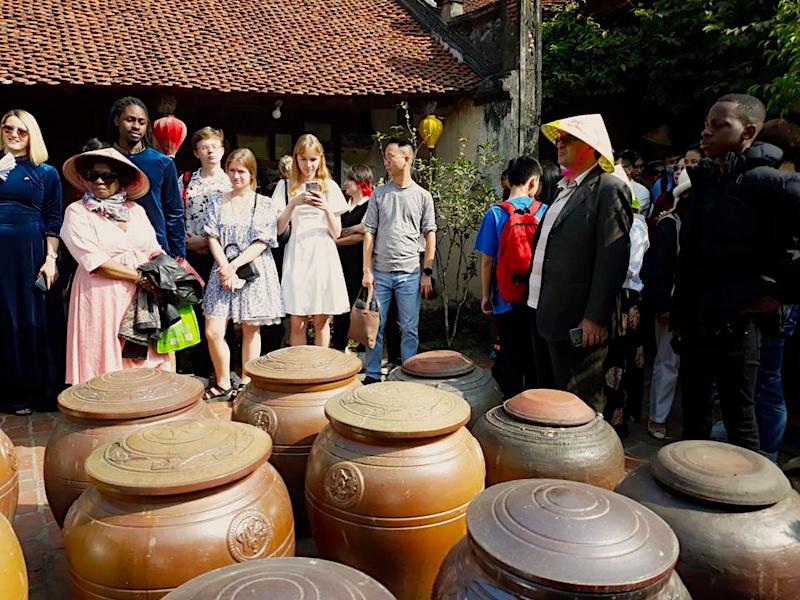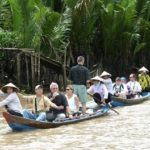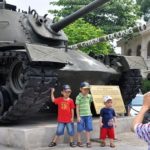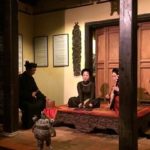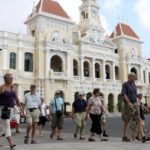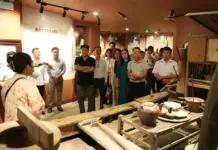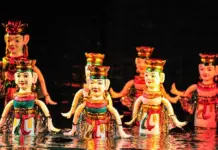Hanoi will play a key role in achieving the objectives of the Vietnam Tourism Marketing Strategy for 2030, making Vietnam an attractive and sustainable tourism destination and the first choice for tourists in the Southeast Asian region.
| Foreign tourists enjoy experiencing Duong Lam Ancient Village in Hanoi’s outskirt town of Son Tay. Photo: Hoai Nam/The Hanoi Times |
Hanoi, along with other provinces and cities, has identified tourism marketing as a strategic breakthrough to restore and develop Vietnam’s tourism in a sustainable way, according to the Hanoi People’s Committee’s plan to implement the national tourism development strategy by 2030 in the capital.
The municipal tourism department said the city will continue to strengthen communication and promotional tourism activities, such as stronger dissemination of tourist destinations and new tourism products of the capital through international media channels, websites, social networking platforms (Youtube and Facebook), and appropriate forms of communication with the messages “Hanoi – Travel to Love” and “Hanoi – A safe and attractive tourist destination”.
Besides, the department will organize more farm trips targeting potential foreign markets.
With such promotional efforts, tourism is expected to become the city’s spearhead economic sector by 2030, with the goal of welcoming around 14 million international visitors, contributing to the estimated 35 million foreign arrivals to the country according to the National Marketing Strategy to 2030.
Under the newly-approved Vietnam Tourism Marketing Strategy, the Ministry of Culture, Sports and Tourism will continue to highlight the core values of the Vietnamese tourism brand, which is associated with national potential, advantages, cultural identity, cuisine, heritage, natural landscapes connected with emotional and spiritual factors of tourists.
Vietnam’s tourism brand is built on the basis of regional tourism brands, local destination brands, and product brands. The management agency will continue to use the title and logo “Vietnam – Timeless Charm” in the international market and “Vietnam – the Endless Beauty” in the domestic market. However, in each phase, the tourism industry will build branch titles and logos that are relevant to the target markets of that period.
In the coming years, marketing activities will be divided into five main product groups, including island tourism; cultural tourism; eco-tourism; urban tourism; and new tourism product groups such as medical and health tourism; agricultural and rural tourism; sports tourism; MICE, cruise tourism…
In 2022-2025, the tourism industry will focus on reviving traditional markets and developing emerging markets such as India and the Middle East region.
2026-2030 is the period to increase the market share of high-spending customers from traditional markets such as Northeast Asia, Europe, ASEAN, and North America, and to diversify markets.
For the Southeast Asian market, in particular, the priority segments are metropolitan tourists, MICE, and group and family travelers. For the Northeast Asian market, MICE and golf tourists, family guests, retirees, and single women are the priority groups.
For the Western European, North American, Northern European, Russian and Australian markets, the priority group will be family tourists, travel spenders, and middle-aged tourists.
Ancient house in Ma May
NDO – Ma May, a rare quarter that still retains several old houses, has created one of the characteristics of Hanoi. Hanoi’s streets are becoming increasingly crowded and traditional features can sometimes be hidden behind modern life. But if one takes the time to relax and look around, the ancient features begin to reveal themselves.
Book festival “Hanoi – City for Peace” opens
NDO – The Hanoi book festival with the theme “Hanoi – City for Peace” opened at the Imperial Citadel of Thang Long in Hanoi on October 2, as part of activities to celebrate the 65th anniversary of the capital’s Liberation Day (October 10, 1954-2019).

